Remdesivir
- CAS NO.:1809249-37-3
- Empirical Formula: C27H35N6O8P
- Molecular Weight: 602.58
- MDL number: MFCD31657351
- EINECS: 210-629-4
- Update Date: 2024-10-30 18:52:02

What is Remdesivir?
Absorption
Remdesivir is absorbed quickly; maximal plasma concentrations following a single 30-minute intravenous infusion are reached within 0.67-0.68 hours (Tmax). Repeated dosing yields a Cmax (coefficient of variation as a percent) of 2229 (19.2) ng/mL and an AUCtau of 1585 (16.6) ng*h/mL.
Remdesivir metabolite GS-441524 has measured values: Tmax 1.51-2.00 hours, Cmax 145 (19.3) ng/mL, AUCtau 2229 (18.4) ng*h/mL, and Ctrough 69.2 (18.2) ng/mL. Another metabolite, GS-704277, has measured values: Tmax 0.75 hours, Cmax 246 (33.9) ng/mL, AUCtau 462 (31.4) ng*h/mL, and an undetermined Ctrough.
A 10mg/kg intravenous dose given to cynomolgus monkeys distributes to the testes, epididymis, eyes, and brain within 4h.
Toxicity
Data regarding overdoses of remdesivir are not readily available. Overdoses of other nucleoside analogs like acyclovir can be managed with symptomatic and supportive treatment.
Description
Remdesivir, sold under the brand name Veklury,is a broad-spectrum antiviral medication developed by the biopharmaceutical company Gilead Sciences.It is administered via injection into a vein.During the COVID-19 pandemic, remdesivir was approved or authorized for emergency use to treat COVID-19 in around 50 countries.Updated guidelines from the World Health Organization in November 2020 include a conditional recommendation against the use of remdesivir for the treatment of COVID-19.
Description
Remdesivir is an antivirus drug that was developed by Gilead Sciences (Foster City, CA) to combat the West African Ebola virus disease epidemic in the mid-2010s. It has also shown activity against the hemorrhagic fever Marburg virus (MARV), the Middle East respiratory syndrome-related coronavirus (MERS-coV), and the severe acute respiratory syndrome coronavirus (SARS-coV).
Within months after the outbreak of the current COVID-19 viral pandemic, researchers began to evaluate the ability of remdesivir to overcome the corresponding virus, SARS-CoV-2. Of the five Phase III trials that have begun to date, two are being conducted in China, one by the US National Institutes of Health, and two by Gilead. All of these trials focus on patients who have severe and moderate cases of the disease.
The consensus in the medical community is that the trials won’t give definitive results. Researchers are optimistic, though, that remdesivir will help some patients. But according to H. Clifford Lane, the clinical director at the National Institutes of Allergy and Infectious Diseases who is overseeing the NIH trial, “The studies might give us some hint, but I do think it will be important to get a study launched that focuses on early disease.”
In addition to the clinical trials, and because of remdesivir’s proven success against other viruses, it is being sought as a compassionate alternative for patients with COVID-19. The Washington Post recently featured an article about families who are seeking experimental treatments.
See the latest issue of Chemical & Engineering News for more extensive information?on remdesivir clinical trials.
The Uses of Remdesivir
Remdesivir was originally developed to treat hepatitis C,and was subsequently investigated for Ebola virus disease and Marburg virus infections before being studied as a post-infection treatment for COVID-19.
Background
Severe acute respiratory syndrome coronavirus 2 (SARS-CoV-2) is the causative agent of coronavirus disease 2019 (COVID-19), which is a respiratory disease that is capable of progressing to viral pneumonia and acute respiratory distress syndrome (ARDS); COVID-19 can be fatal. Like other RNA viruses, SARS-CoV-2 depends on an RNA-dependent RNA polymerase (RdRp) enzyme complex for genomic replication, which can be inhibited by a class of drugs known as nucleoside analogues.
Remdesivir (GS-5734) is an adenosine triphosphate analogue first described in the literature in 2016 as a potential treatment for Ebola. Broad antiviral activity of remdesivir is suggested by its mechanism of action, and to date, it has demonstrated in vitro activity against the Arenaviridae, Flaviviridae, Filoviridae, Paramyxoviridae, Pneumoviridae, and Coronaviridae viral families. Remdesivir activity against the Coronaviridae family was first demonstrated in 2017, leading to considerable interest in remdesivir as a possible treatment for COVID-19. Remdesivir was confirmed as a non-obligate chain terminator of RdRp from SARS-CoV-2 and the related SARS-CoV and MERS-CoV, and has been investigated in multiple COVID-19 clinical trials.
After initially being granted an FDA Emergency Use Authorization (EUA) on May 1st, 2020, remdesivir was fully approved by the FDA for the treatment of COVID-19 on October 22, 2020. Remdesivir is currently marketed under the trademark name VEKLURY by Gilead Sciences Inc. Remdesivir was also approved by the European Commission on July 3, 2020. Remdesivir in combination with baricitinib for the treatment of COVID-19, was granted an FDA Emergency Use Authorization on November 19, 2020.
Indications
Remdesivir is indicated for the treatment of adult and pediatric patients 28 days of age and older and weighing at least 3 kg for coronavirus disease 2019 (COVID-19) infection requiring hospitalization. It is also indicated for the treatment of non-hospitalized patients with mild-to-moderate COVID-19, who are at high risk for progression to severe COVID-19, including hospitalization or death.
Remdesivir was originally granted FDA Emergency Use Authorization (EUA) on May 1, 2020, for use in adults and children with suspected or confirmed COVID-19 in a hospital setting with an SpO2 ≤94%. Following the FDA approval, this EUA was revised to cover hospitalized pediatric patients between 3.5 and 40 kg, as well as those under 12 years of age that weigh at least 3.5 kg, with suspected or laboratory-confirmed COVID-19.
Under both the on-label and EUA indications, patients not needing invasive mechanical ventilation or extracorporeal membrane oxygenation (ECMO) should be treated for 5 days (including the loading dose on day 1) and may be extended up to 10 days if they do not show improvement. Patients requiring invasive mechanical ventilation or ECMO should be treated for 10 days.
In Europe, remdesivir is approved for the treatment of adults and adolescents weighing at least 40 kg with pneumonia requiring supplemental oxygen (low- or high-flow oxygen or other non-invasive ventilation at start of treatment). It is also indicated for the treatment of COVID-19 in adults who do not require supplemental oxygen and who are at increased risk of progressing to severe COVID-19.
Definition
ChEBI: Remdesivir is a carboxylic ester resulting from the formal condensation of the carboxy group of N-[(S)-{[(2R,3S,4R,5R)-5-(4-aminopyrrolo[2,1-f][1,2,4]triazin-7-yl)-5-cyano-3,4-dihydroxytetrahydrofuran-2-yl]methoxy}(phenoxy)phosphoryl]-L-alanine with the hydroxy group of 2-ethylbutan-1-ol. A broad-spectrum antiviral prodrug with potent in vitro antiviral activity against a diverse panel of RNA viruses such as Ebola virus, MERS-CoV and SARS-CoV. It is currently in Phase III clinical trials for the treatment of Covid-19 in adults. It has a role as an antiviral drug, a prodrug and an anticoronaviral agent. It is a carboxylic ester, a pyrrolotriazine, a nitrile, a phosphoramidate ester, a C-nucleoside and an aromatic amine. It is functionally related to a GS-441524.
Indications
Remdesivir is an antiviral nucleotide analogue used for therapy of severe novel coronavirus disease 2019 (COVID-19) caused by severe acute respiratory syndrome (SARS) coronavirus 2 (CoV-2) infection. Remdesivir therapy is given intravenously for 3 to 10 days and is frequently accompanied by transient, reversible mild-to-moderate elevations in serum aminotransferase levels but has been only rarely linked to instances of clinically apparent liver injury, its hepatic effects being overshadowed by the systemic effects of COVID-19.
Pharmacokinetics
Remdesivir is a nucleoside analog used to inhibit the action of RNA polymerase. The duration of action is moderate, as it is given once daily. Due to much higher selectivity of mammalian DNA and RNA polymerases, including human mitochondrial RNA polymerase, for ATP over remdesivir triphosphate, remdesivir is not a significant inhibitor of these enzymes, which contributes to its overall tolerability and safety profile. Despite this, remdesivir carries risks for hypersensitivity reactions, including anaphylaxis and other infusion-related reactions, elevated transaminase levels, and potential decreased efficacy when combined with hydroxychloroquine or chloroquine.
Side Effects
The most common adverse effects in people treated with remdesivir were respiratory failure and blood biomarkers of organ impairment, including low albumin, low potassium, low count of red blood cells, low count of thrombocytes, and elevated bilirubin (jaundice).Other reported adverse effects include gastrointestinal distress, elevated transaminase levels in the blood (liver enzymes), infusion site reactions, and electrocardiogram abnormalities. Remdesivir may cause infusion‐related reactions, including low blood pressure, nausea, vomiting, sweating or shivering.
Metabolism
Remdesivir is a phosphoramidate prodrug that must be metabolized within host cells to its triphosphate metabolite to be therapeutically active. Upon cell entry, remdesivir is presumed to undergo first esterase-mediated hydrolysis to a carboxylate form followed by cyclization to eject the phenoxide moiety and finally hydrolysis of the cyclic anhydride to yield the detectable alanine metabolite (GS-704277). The alanine metabolite is subsequently hydrolyzed to yield the monophosphate form of remdesivir, which is either hydrolyzed again to yield the bare nucleoside metabolite GS-441524 or phosphorylated by cellular kinases to yield the active triphosphate form.
Mode of action
As an adenosine nucleoside triphosphate analog (GS-443902),the active metabolite of remdesivir interferes with the action of viral RNA-dependent RNA polymerase and evades proofreading by viral exoribonuclease (ExoN), causing a decrease in viral RNA production.In some viruses, such as the respiratory syncytial virus, it causes the RNA-dependent RNA polymerases to pause, but its predominant effect (as in Ebola) is to induce an irreversible chain termination. Unlike with many other chain terminators, this is not mediated by preventing addition of the immediately subsequent nucleotide, but is instead delayed, occurring after five additional bases have been added to the growing RNA chain.For the RNA-Dependent RNA Polymerase of MERS-CoV, SARS-CoV-1, and SARS-CoV-2, arrest of RNA synthesis occurs after incorporation of three additional nucleotides.Hence, remdesivir is classified as a direct-acting antiviral agent that works as a delayed chain terminator.
Properties of Remdesivir
| Melting point: | n/a |
| Density | 1.47±0.1 g/cm3(Predicted) |
| storage temp. | Store at -20°C |
| solubility | DMSO:60.0(Max Conc. mg/mL);100.0(Max Conc. mM) Ethanol:12.0(Max Conc. mg/mL);20.0(Max Conc. mM) |
| solubility | very slightly soluble |
| appearance | white to off-white crystalline powder |
| pka | 12.00±0.70(Predicted) |
| form | A crystalline solid |
| color | White |
Safety information for Remdesivir
| Signal word | Warning |
| Pictogram(s) |
 Exclamation Mark Irritant GHS07 |
| GHS Hazard Statements |
H315:Skin corrosion/irritation H319:Serious eye damage/eye irritation H335:Specific target organ toxicity, single exposure;Respiratory tract irritation |
| Precautionary Statement Codes |
P301+P312:IF SWALLOWED: call a POISON CENTER or doctor/physician IF you feel unwell. P302+P352:IF ON SKIN: wash with plenty of soap and water. P305+P351+P338:IF IN EYES: Rinse cautiously with water for several minutes. Remove contact lenses, if present and easy to do. Continuerinsing. |
Computed Descriptors for Remdesivir
| InChIKey | RWWYLEGWBNMMLJ-YSOARWBDSA-N |
Remdesivir manufacturer
Zydus Lifesciences Ltd.
New Products
Tert-butyl bis(2-chloroethyl)carbamate 4-Methylphenylacetic acid N-Boc-D-alaninol N-BOC-D/L-ALANINOL N-octanoyl benzotriazole 3-Morpholino-1-(4-nitrophenyl)-5,6-dihydropyridin- 2(1H)-one Furan-2,5-Dicarboxylic Acid DIETHYL AMINOMALONATE HYDROCHLORIDE 1,1’-CARBONYLDIIMIDAZOLE R-2-BENZYLOXY PROPIONIC ACID 1,1’-CARBONYLDI (1,2-4 TRIAZOLE) N-METHYL INDAZOLE-3-CARBOXYLIC ACID (2-Hydroxyphenyl)acetonitrile 4-Bromopyrazole 5-BROMO-2CYANO PYRIDINE 5,6-Dimethoxyindanone 5-broMo-2-chloro-N-cyclopentylpyriMidin-4-aMine 2-(Cyanocyclohexyl)acetic acid 4-methoxy-3,5-dinitropyridine 1-(4-(aminomethyl)benzyl)urea hydrochloride 2-aminopropyl benzoate hydrochloride diethyl 2-(2-((tertbutoxycarbonyl)amino) ethyl)malonate tert-butyl 4- (ureidomethyl)benzylcarbamate Ethyl-2-chloro((4-methoxyphenyl)hydrazono)acetateRelated products of tetrahydrofuran

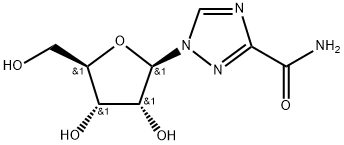
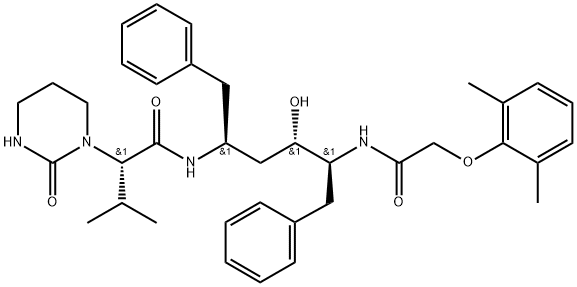
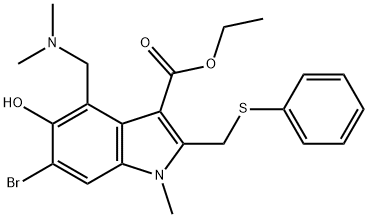
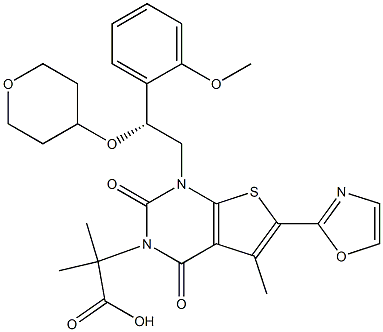
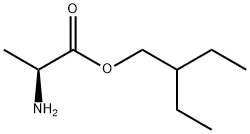
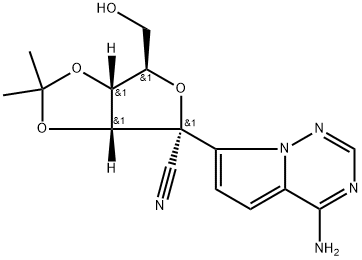
![N-[(S)-(4-nitrophenoxy)phenoxyphosphinyl]-L-Alanine 2-ethylbutyl ester](https://img.chemicalbook.in/CAS/20211123/GIF/1354823-36-1.gif)
You may like
-
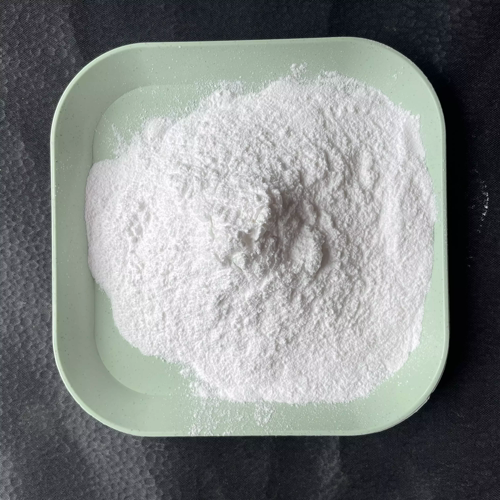 1809249-37-3 Remdesivir 98%View Details
1809249-37-3 Remdesivir 98%View Details
1809249-37-3 -
 1975-50-4 98%View Details
1975-50-4 98%View Details
1975-50-4 -
 2-HYDROXY BENZYL ALCOHOL 98%View Details
2-HYDROXY BENZYL ALCOHOL 98%View Details
90-01-7 -
 2-Chloro-1,3-Bis(Dimethylamino)Trimethinium Hexafluorophosphate 221615-75-4 98%View Details
2-Chloro-1,3-Bis(Dimethylamino)Trimethinium Hexafluorophosphate 221615-75-4 98%View Details
221615-75-4 -
 61397-56-6 CIS BROMO BENZOATE 98%View Details
61397-56-6 CIS BROMO BENZOATE 98%View Details
61397-56-6 -
 14714-50-2 (2-Hydroxyphenyl)acetonitrile 98+View Details
14714-50-2 (2-Hydroxyphenyl)acetonitrile 98+View Details
14714-50-2 -
 118753-70-1 98+View Details
118753-70-1 98+View Details
118753-70-1 -
 733039-20-8 5-broMo-2-chloro-N-cyclopentylpyriMidin-4-aMine 98+View Details
733039-20-8 5-broMo-2-chloro-N-cyclopentylpyriMidin-4-aMine 98+View Details
733039-20-8